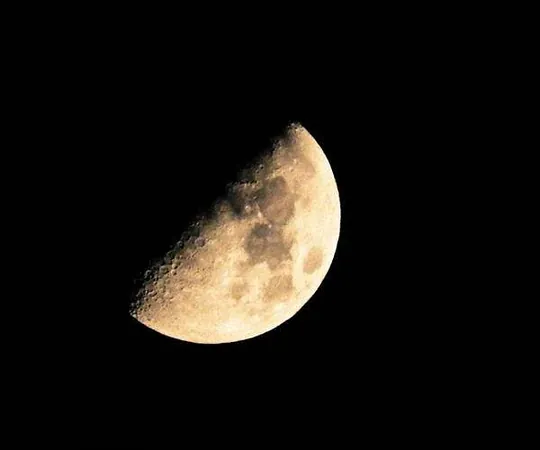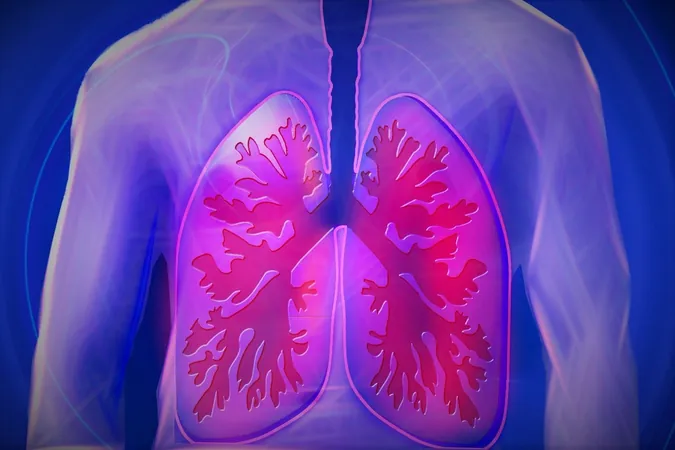
NASA Unveils Groundbreaking Lunar Strategy to Elevate Earth Monitoring!
2025-04-14
Author: Wei Ling
NASA Takes to the Skies for Moonlit Insights
In an extraordinary leap for Earth observation, NASA's ER-2 aircraft transformed into a spectacular lunar observatory during nighttime missions in March 2025. Soaring above the clouds from NASA's Armstrong Flight Research Center in California, this innovative operation was part of the Airborne Lunar Spectral Irradiance (air-LUSI) project.
Harnessing Moonlight for Precision Calibration
Armed with a state-of-the-art spectroradiometer, the air-LUSI team captured moonlight across multiple wavelengths. By analyzing the Sun's reflection off the lunar surface, scientists are achieving unparalleled accuracy in calibrating Earth-monitoring satellites.
Kevin Turpie, Principal Investigator at NASA’s Goddard Space Flight Center, highlights the significance: "The Moon serves as a perfect benchmark, enabling satellites to measure Earth's dynamic processes with newfound precision." With the Moon's consistent brightness, it stands as a reliable standard for satellite sensors monitoring weather, ecosystems, and oceanic changes.
Aerial Advantage: 70,000 Feet Above Earth!
Flying at an astonishing altitude of nearly 70,000 feet, the ER-2 aircraft accessed a vantage point above 95% of Earth's atmosphere. This altitude ensures minimal atmospheric interference, resulting in some of the purest data ever collected.
Kelsey Bisson, a NASA program scientist, stated, "These air-LUSI measurements are the most accurate to date. They not only enhance our understanding of Earth and its weather patterns but also pave the way for significant cost savings in satellite operations."
Collaboration at Its Best: A Cross-Border Scientific Alliance
This ambitious project is a testament to collaboration, uniting NASA, the National Institute of Standards and Technology (NIST), the U.S. Geological Survey, the University of Maryland Baltimore County, and Canada’s McMaster University. The latter played a crucial role by developing innovative hardware like the Autonomous Robotic Telescope Mount Instrument System, facilitating precise lunar tracking during flights.
Andrew Gadsden, co-investigator and associate professor at McMaster, expressed enthusiasm for the partnership: "This collaboration showcases the thrilling potential of engineering and scientific synergy between the U.S. and Canada."
A New Era in Airborne Lunar Observations
The successful launch and functioning of the HAAMR system herald a new age in high-precision lunar observation. As co-investigator John Woodward IV puts it, the "highest accuracy measurements" of lunar light are driving forward the evolution of Earth observation systems.



 Brasil (PT)
Brasil (PT)
 Canada (EN)
Canada (EN)
 Chile (ES)
Chile (ES)
 Česko (CS)
Česko (CS)
 대한민국 (KO)
대한민국 (KO)
 España (ES)
España (ES)
 France (FR)
France (FR)
 Hong Kong (EN)
Hong Kong (EN)
 Italia (IT)
Italia (IT)
 日本 (JA)
日本 (JA)
 Magyarország (HU)
Magyarország (HU)
 Norge (NO)
Norge (NO)
 Polska (PL)
Polska (PL)
 Schweiz (DE)
Schweiz (DE)
 Singapore (EN)
Singapore (EN)
 Sverige (SV)
Sverige (SV)
 Suomi (FI)
Suomi (FI)
 Türkiye (TR)
Türkiye (TR)
 الإمارات العربية المتحدة (AR)
الإمارات العربية المتحدة (AR)